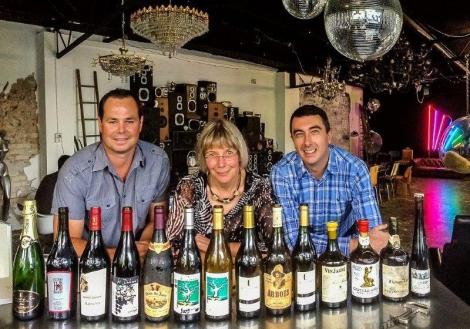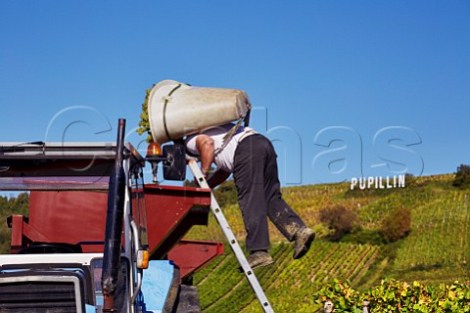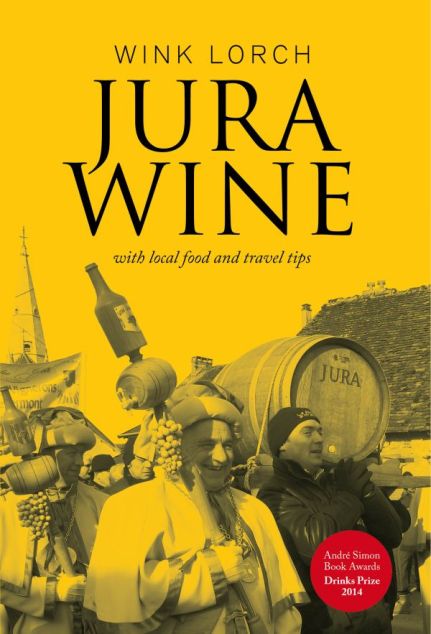Detailed and colourful wine maps have long been a source of fascination and interest to me. Some designate geographic boundaries of appellations; others indicate the best vineyards or producers; a few will show features such as altitude; and there are also ambitious maps that attempt to combine the above.
In my Jura Wine book, I am proud to have maps by the talented wine educator, blogger and map-maker Quentin Sadler. The main Jura map provides an indication, rather than an exact rendition, of vineyard areas and appellation boundaries, in relation to local towns, rivers and – importantly – altitude. The book also includes a series of larger scale maps showing the location of vignerons profiled.
In the middle of lockdown, while browsing the Purple Pages members forum of Jancis Robinson’s website, I discovered the most original map of Jura I’ve seen in some time, designed primarily, I think, to make you smile. It was created by Brazilian Pedro Kok, an architectural photographer, who happens also to be passionate about wine.
On Pedro’s Instagram accounts in Portuguese and English he enjoys sharing illustrations of bad jokes about grape varieties. However, in lockdown, he decided also to make a series of maps and diagrams of vineyard areas he loved, each one in an entirely different style.
Below – for the sheer pleasure of it – I am sharing the map scrolls that show the Jura wine route between Lyon and Besançon, including producers’ locations, taken from my book. Pedro told me he had some prints made, which he offered to friends in return for bottles of Jura to keep him topped up during lockdown – a lovely swap.

La route des vins du Jura sur le chemin entre Besançon et Lyon by Pedro Kok. 40x30cm inkjet on paper. 2020. Based on iconography by John Ogilby (published: London, 1675), arranged by K.M. Alexander.
My thanks to Pedro for allowing me to reproduce the map above – you can also access a larger resolution version on this link.
The Saint-Laurent quarter
Like many villages in the Jura, Montigny-sur-Arsures, the self-styled capital of the Trousseau grape, has several different quarters, and one is named Saint-Laurent. It is here that you will find Château de Chavanes (for some years run as an occasional bed and breakfast, and whose vineyards were taken over by Domaine du Pélican), Domaine Fumey-Chatelain, and at the top of the road, retired vigneron Jacques Puffeney. All are linked in some respects and I spent a very pleasant afternoon on my trip to Jura a few weeks ago reacquainting myself with the quarter, which is in effect a single street.
In my last post I mentioned a quick visit to Domaine du Pélican and since then I had the pleasure of interviewing the owners François Duvivier and Guillaume d’Angerville, as well as tasting six of their wines for the 67 Pall Mall series of masterclasses. If you missed it, you can now watch the video of the entire masterclass.
Having used the cellar of Château de Chavanes since taking over in 2012, Domaine du Pélican is building its own winery on the main vineyard site, complete with a ‘cave à Vin Jaune’ which should be finished next year. Meanwhile, the Fumey-Chatelain family, which has had close links with Château de Chavanes for generations and had taken over the original stables to use as its winery and tasting room, will now expand into the cellar that Pélican has been using.
Domaine Fumey-Chatelain has been run by Raphaël Fumey (a cousin both of Stéphane Tissot and of Frédéric Lornet) and his wife Adeline Chatelain, since 1991. The pair built up a steady local reputation for their wines, gradually increasing their vineyard area to 17ha, with more area to be taken over soon.
Their son, Marin Fumey has officially partnered with his parents on the estate since rushing back after harvest in Australia (and previously South Africa) in April in the middle of lockdown. However, he has been the main winemaker for a few years, while Raphaël runs the vineyards and Adeline the sales side. As he had for several years previously, Marin had been doing the Southern Hemisphere harvest – over the years, he has worked among others with Spinifex in Barossa, Barn Cottage in Central Otago and Peter-Allan Finlayson’s Crystallum in South Africa.
Not only has Marin now extensive winery experience and travelled widely, he also speaks excellent English, a rarity in the Jura. He has ambitious plans to move the family estate towards export sales and is hoping to fully convert the domaine to organics and biodynamics in 2022, if all goes well.

Adeline Chatelain and her son Marin Fumey outside the tasting room in Saint-Laurent © Wink Lorch
Tasting through the Fumey-Chatelain range for the first time in some years was a pleasure, especially the Trousseaus, which include a more expensive, richer cuvée from a vineyard planted with Trousseau à la Dame. The wine is amusingly labelled ‘Le Bastard’ in reference to the Portuguese name for Trousseau – Bastardo .
A couple of top-end Fumey-Chatelain whites were exciting too, the Chardonnay Le Zouave 2015 from a selection of their best vineyards, and the aromatic Savagnin Rose 2018. This Savagnin variation is the same as Klevener de Heiligenstein in Alsace, and I have also tasted an exciting one made by Jeff Vejr of Golden Cluster in Oregon. This may be the same as what is known as Savagnin Muscaté down in southern Jura as produced by Domaine des Marnes Blanches.
Marin made just one barrel from their two rows of Savagnin Rose vines. I bought two bottles and could not resist opening one with friends a few days later, a really intense, exotic wine, well balanced but zinging with acidity. I hope to resist the second bottle for a while as it will certainly age well. This is an estate to watch.
A tale from Jacques Puffeney
Before I left Saint-Laurent, I went to see Jacques, who I had last seen some years ago. Although his final vintage for most of his wines was 2014, he had kept back some of his best and oldest Trousseau vines and I was delighted to try with him the gorgeous 2017. This was his very last vintage before passing on these vines to Domaine du Pélican, who had already taken on the rest of his vineyards.
As we chatted I also tasted three Vins Jaune vintages: his 2013, just bottled in June, although originally planned for April bottling, a Jaune with the acid kick to allow it to age particularly well; the 2012, very good too, a vintage that offered quantity and quality; and a treat – the fabulous 2005 vintage, possibly the best this century.

With Jacques Puffeney on a visit a few years ago. © Brett Jones
I asked Jacques to tell me about his earliest encounter with his New York-based US importer Neal Rosenthal. Although Jacques’ wines were not the only ones to be in the US in the late 1990s, his wines, especially the reds, really did much to spark the interest in Jura wines in the US.
Jacques told me how Neal had arrived one morning in the middle of harvest in 1996 and how he told him that he was too busy looking after the press to give Neal a tasting. Eventually Neal persuaded Jacques to receive him for a quick tasting at the end of the day; in the meantime, apparently Neal made a quick trip to Alsace and back (about a 5-hour round trip with a tasting in the middle, presumably). Jacques didn’t think much would come of Neal’s visit, but a few weeks later received an order from Neal to ship 2,000 bottles to the US! This was some order – later he regularly shipped 10,000 bottles per year.
And, for the record, Jacques and Neal share the same birthday and birth year, something they only discovered a few years into their working relationship – they’ve been friends ever since and celebrated their 70th together at Maison Jeunet in Arbois. These men are two wine legends.
More posts are to come about both big and small producers that I’ve revisited or tasted with recently, and in the meantime, I hope you are able to enjoy some Jura wines wherever you are. And tell your friends, the best place to purchase my book is still direct from my Wine Travel Media site for worldwide delivery, available in print or Epub digital form.












